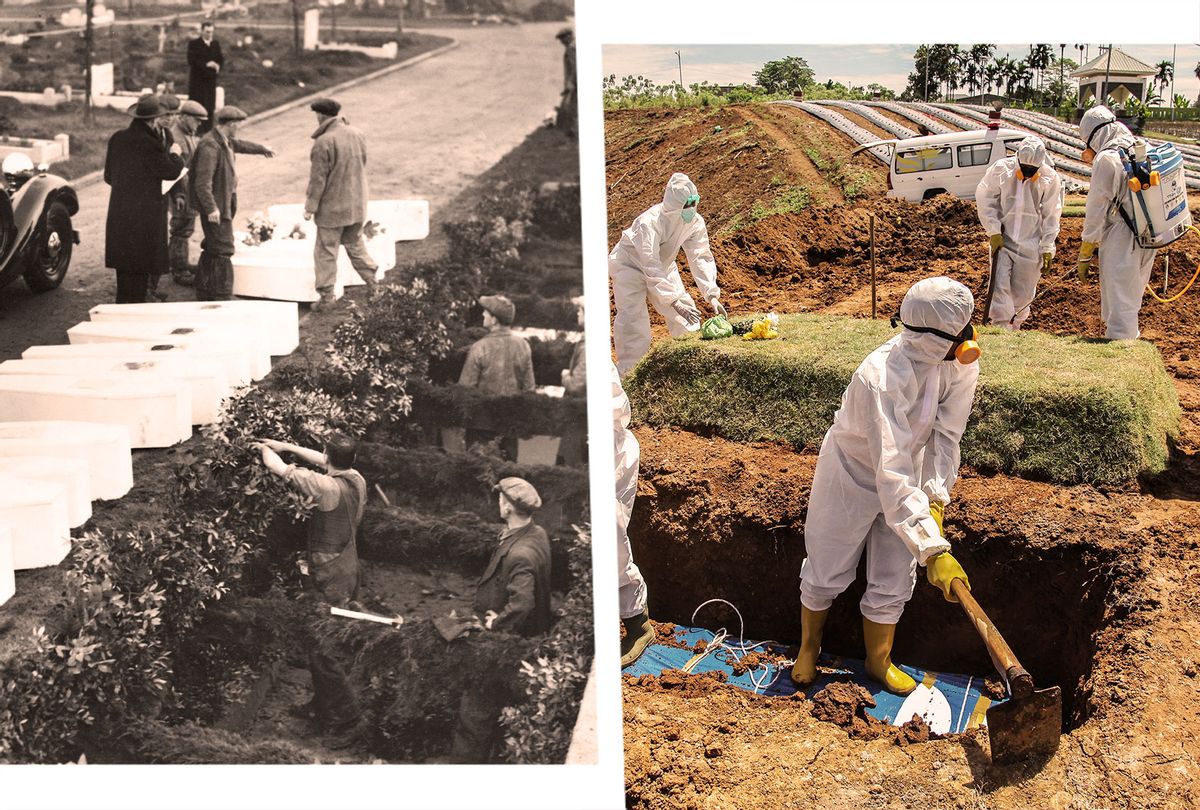Between 1942 and 1943, the average life expectancy of an American fell by 2.9 years. The United States was fighting a fascist menace overseas, while a terrible economic calamity had not yet fully receded into the country's rearview mirror.
Such drops in life expectancy are rare, and usually easily attributable to a cause — World War II, in this case. In general, American life expectancy has risen or remained stagnant every year for the past fifty years, until around 2014 when it tapered off and dipped very slightly. Yet in 2020, the United States is facing a far more dramatic drop in life expectancy, attributable to the pandemic. For some demographics, the drop was as dramatic as the one in 1942.
The U.S. Centers for Disease Control and Prevention (CDC) announced on Wednesday that the average life expectancy fell by one-and-a-half years in 2020, settling at 77.3 years. It breaks down to a three year decline for Hispanics (81.8 years in 2019 to 78.8 years in 2020), a 2.9-year decline for African Americans (74.7 years to 71.8 years) and 1.2 years for white people (78.8 years to 77.6 years).
The overall 1.5-year drop is the largest one-year decline since World War II (when the 1942-1943 drop occurred) and puts life expectancy at the lowest level since 2003. The main contributing factor here is, not surprisingly, the COVID-19 pandemic, which hit the United States unusually hard. Almost three-fourths of the growth (74%) was due to the deadly disease, with drug overdoses also playing a big role. (This is based on provisional data covering the entirety of 2020.)
"Life expectancy has been increasing gradually every year for the past several decades," CDC researcher Elizabeth Arias told Reuters. "The decline between 2019 and 2020 was so large that it took us back to the levels we were in 2003. Sort of like we lost a decade."
While COVID-19 caused a historic drop in American life expectancy, the country's collective mortality rate had been faltering for quite some time. This was not always the case: Between 1959 and 2010, the average American's life span increased by almost a decade, from roughly 69.9 years to roughly 78.9 years. Starting in 2010, however, factors like obesity, drug addiction, alcoholism and suicidality caused the average life expectancy to plateau. (The United States is the only developed country whose life expectancy stopped increasing after 2010.) By 2014, life expectancy began to actually go down, a trend that would continue for three consecutive years.
This was the most prolonged decline that the United States had seen since the period from 1915 to 1918. During the latter half of that span, the United States was mired in World War I and the influenza pandemic, the two of which combined killed 675,000 people in that country. Of course, the United States did not have any combination of crises like that in the 2010s. It also differs from the COVID-19 pandemic because, while the current plague is likely to significantly change American history, the influenza epidemic did not have that effect.
Want more health and science stories in your inbox? Subscribe to Salon's weekly newsletter The Vulgar Scientist.
"For as many people that it killed (50-100 million), the 1918 flu had relatively few long-term impacts on public policy or culture," Dr. Joshua S. Loomis, an assistant professor of biology at East Stroudsburg University, previously told Salon in an interview. "People generally considered the 1918 flu as a horrific extension of [World War I]. When the war and pandemic ended, most people simply wanted to move on and enjoy the economic boom of the 1920s."
Prior to COVID-19, American life expectancy was struggling due to a series of small cuts rather than any giant wound. The COVID-19 pandemic, it now appears, may have been just such an injury. Especially in light of news that the delta variant of the SARS-CoV-2 virus (which causes COVID-19) is spreading rapidly, this news is all the more reason to fight the pandemic and address other ongoing health crises in the United States.



Shares